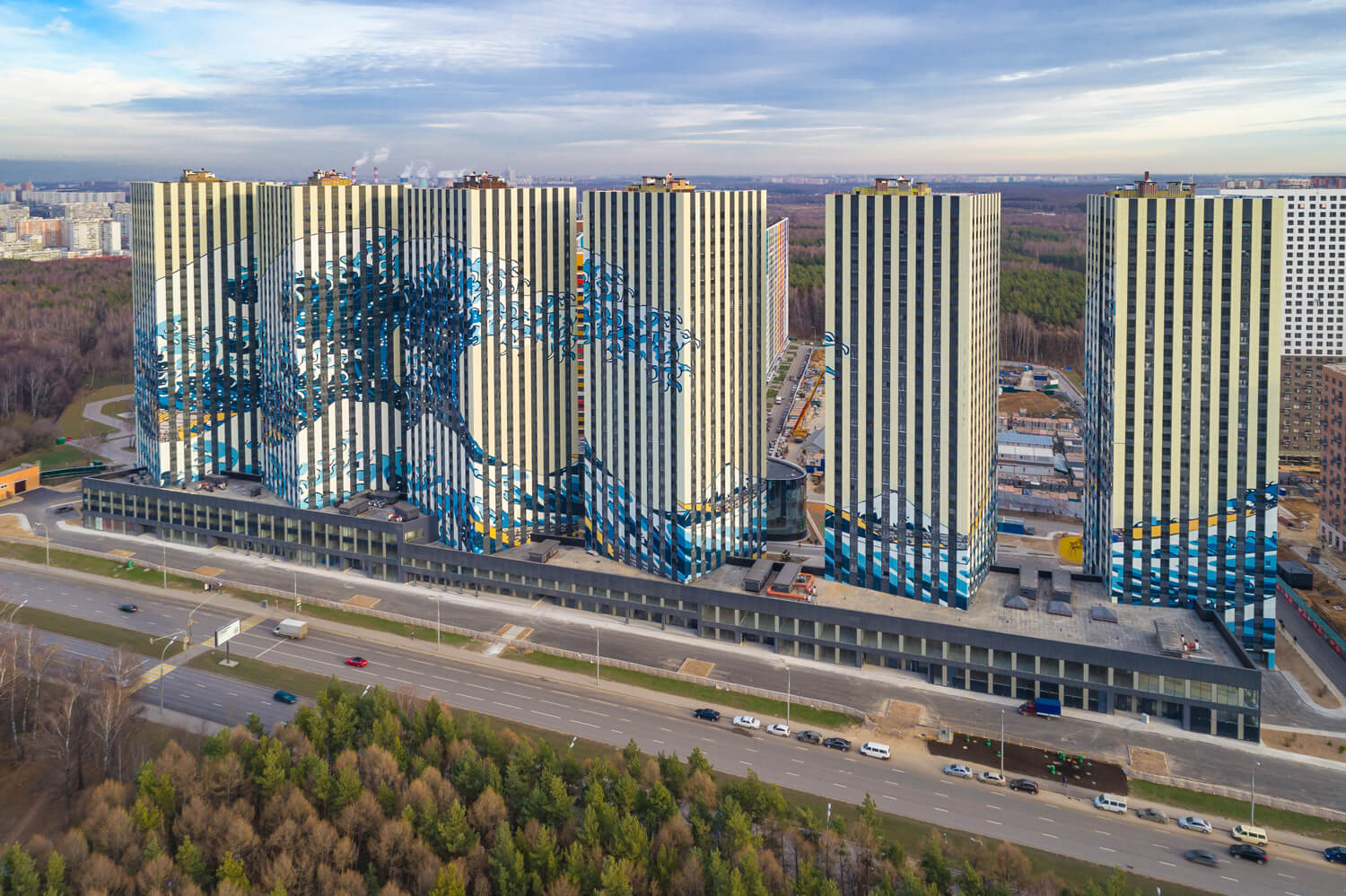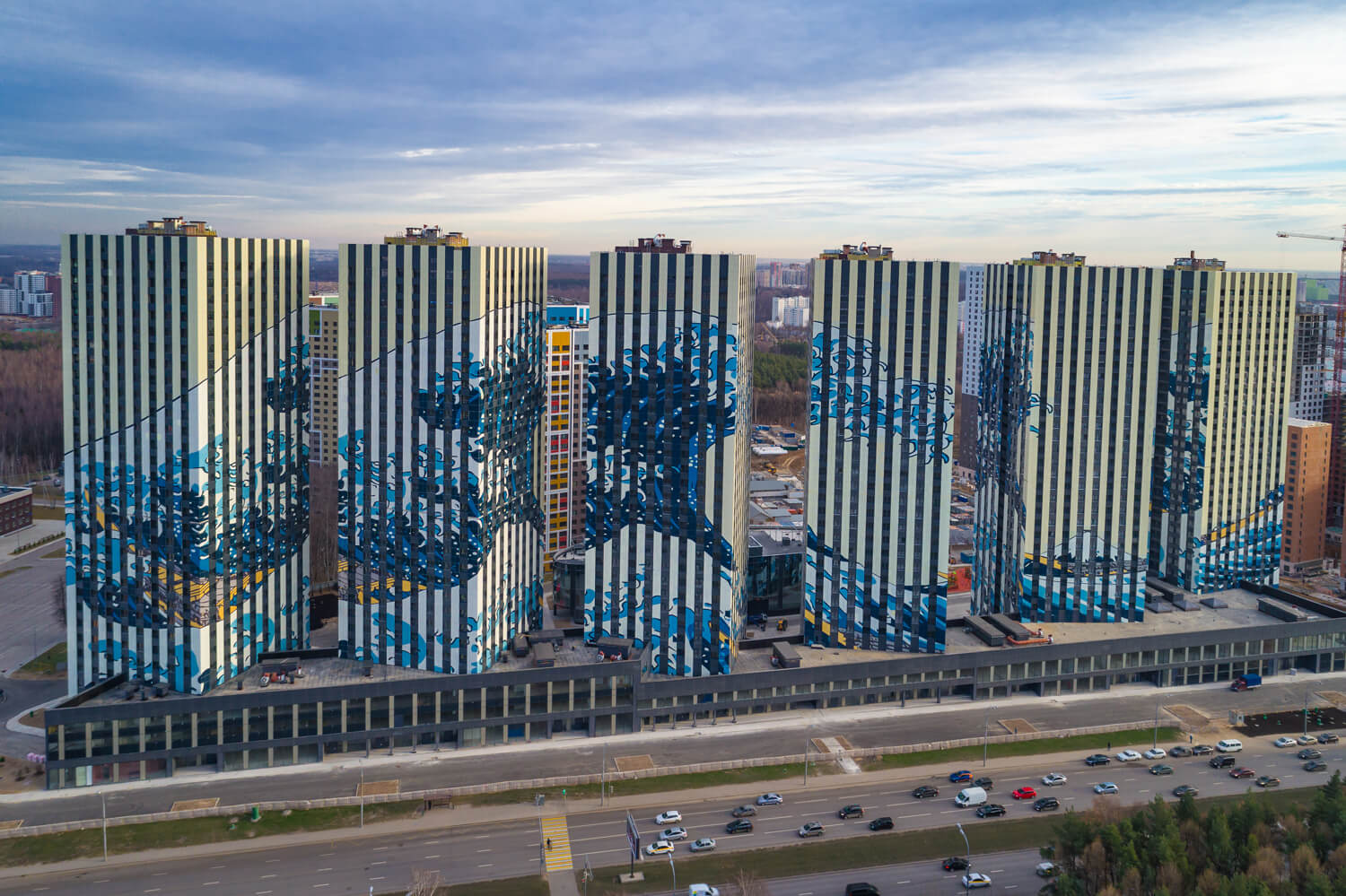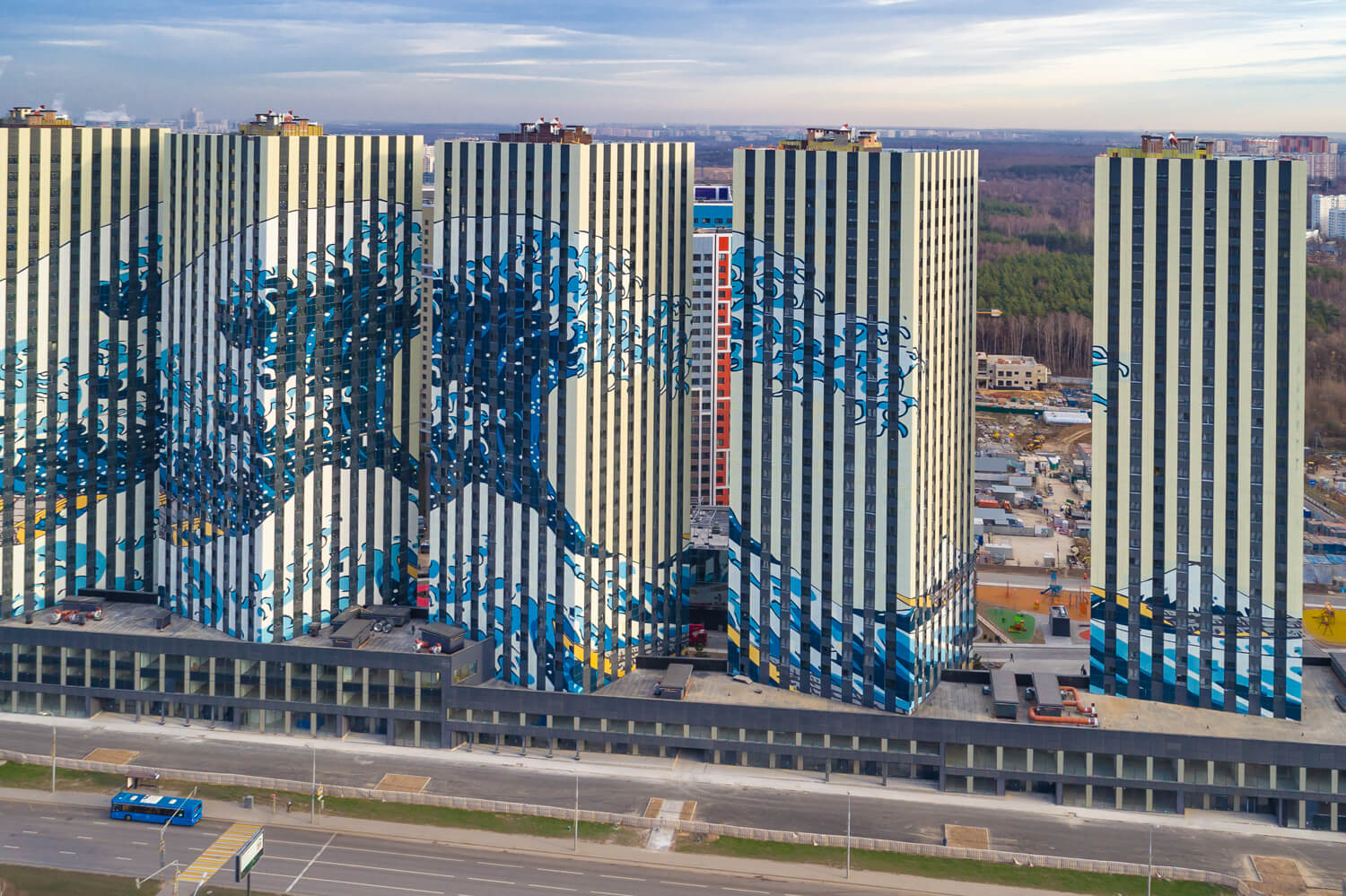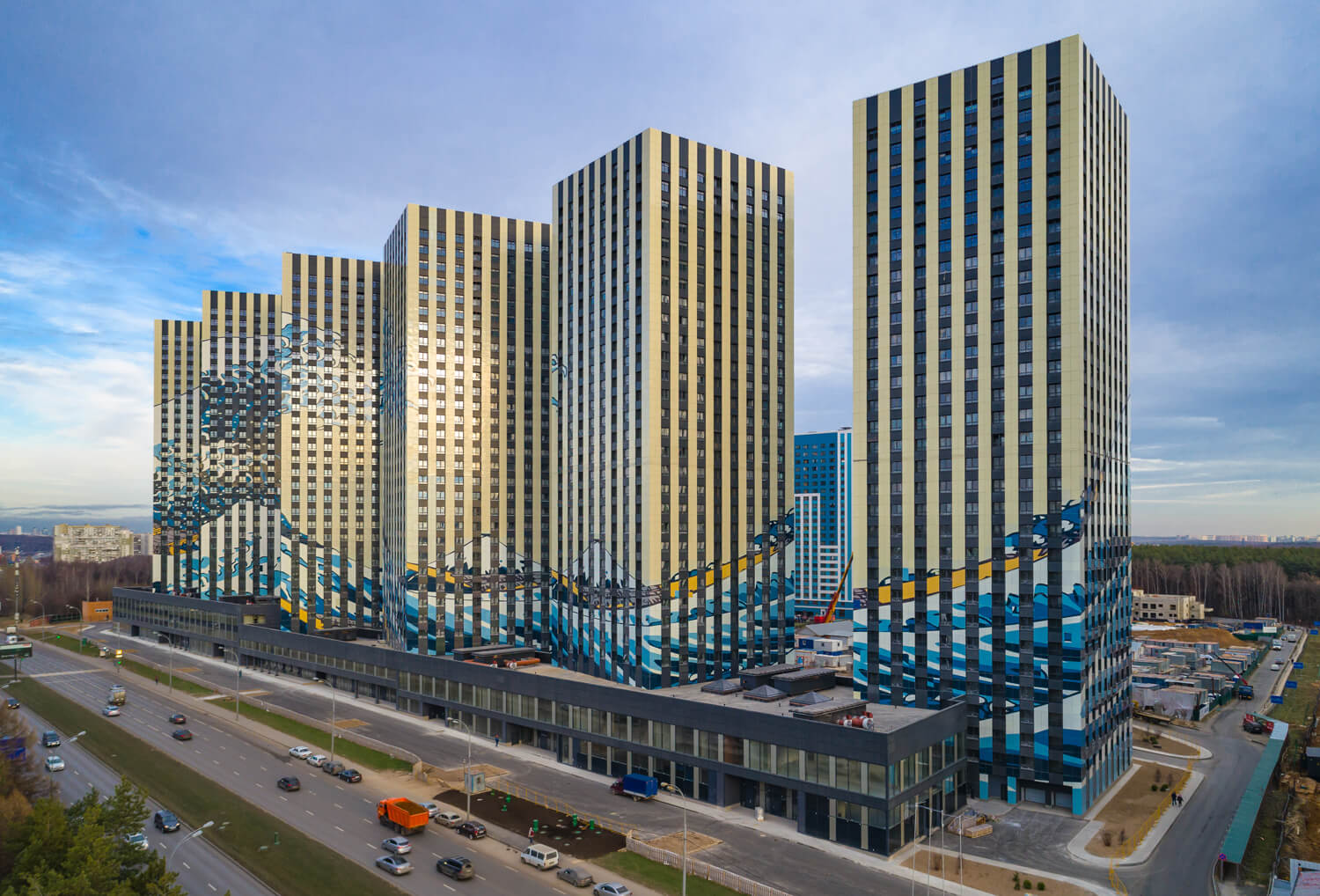Hokusai’s Great Wave Reproduced in XXL Format in Moscow
‘The Great Wave off Kanagawa’ was immortalised in December 2018 on the side of a building in the Russian capital.

Courtesy of Etalon Group.
Named ‘Etalon City’, this urban art project stretches over a residential complex of nine buildings in southwestern Moscow and exhibits silhouettes of cities such as New York, Chicago, Barcelona and Monaco on the facades. Six of these nine buildings serve as backdrops for the monumental fresco that features a famous piece by Katsushika Hokusai and that covers almost 60,000 square metres.
‘The Great Wave off Kanagawa’ was produced between 1831 and 1832, during the ukiyo-e (‘images of an ephemeral and floating world’) movement, a popular and affordable form of art based on the Buddhist concept of the impermanence of the world. Produced as part of the series Thirty-six views of Mount Fuji, the work catches the eye due to its use of intense Prussian blue. The viewer is drawn into the hollow of the unbridled wave about to engulf the three frail craft, with Mount Fuji as the only witness in the background.
The influence of prints
The print, symbolising the beauty and power of indomitable nature, has influenced many artists such as Claude Debussy, for the cover of the score for La Mer, Van Gogh, who used the same deep blue and dynamic waves in his painting Starry Night, and Roy Lichtenstein in his pop art piece Drowning Girl, in which the woman’s tears bear an uncanny resemblance to the breaking of Hokusai’s wave.
More information about this project can be found on the Etalon Group website.

Courtesy of Etalon Group.

Courtesy of Etalon Group.

Courtesy of Etalon Group.
TRENDING
-
The Tattoos that Marked the Criminals of the Edo Period
Traditional tattoos were strong signifiers; murderers had head tattoos, while theft might result in an arm tattoo.

-
Paris, Tokyo: Robert Compagnon
With his co-chef and talented wife, Jessica Yang, Robert Compagnon opened one of the top new restaurants in Paris: Le Rigmarole.
 3:31
3:31 -
Chiharu Shiota, Red Threads of the Soul
Last year, more than 660,000 people visited the retrospective 'Chiharu Shiota: The Soul Trembles' exhibit at the Mori Art Museum.

-
‘Before Doubting Others, Doubt Yourself. Who Can Truly Say a Dish Isn’t What It Used to Be?’
In ‘A Non-Conformist’s Guide to Surviving Society’, author Satoshi Ogawa shares his strategies for navigating everyday life.

-
The Story of Sada Yacco, the Geisha who Bewitched Europe
Described by Dazed magazine as the first beauty influencer, she has been restored to her former glory since 2019.





